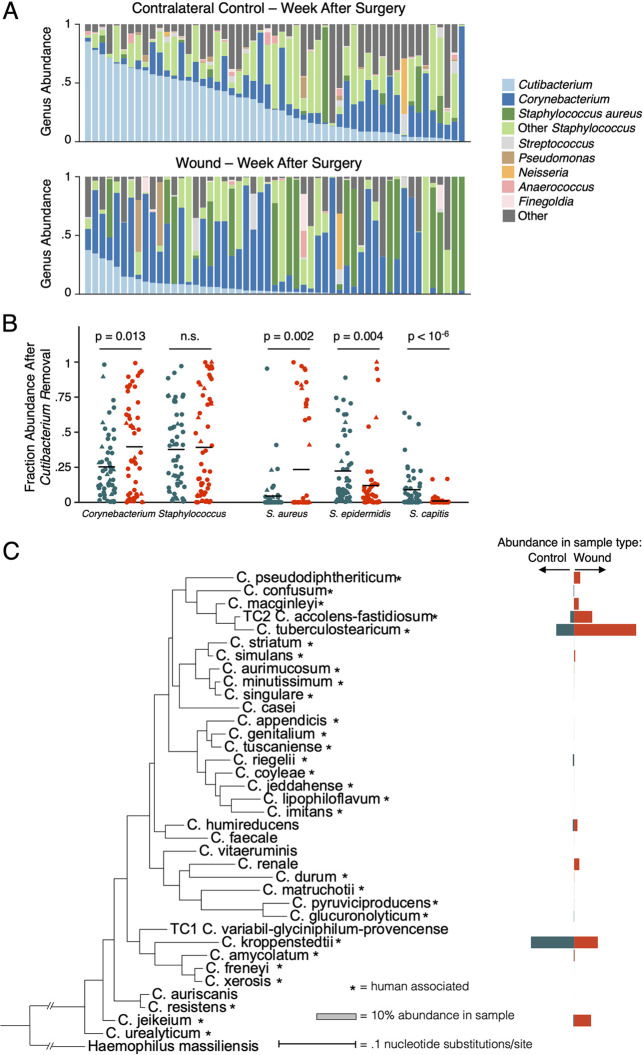FIG 2.
Specific Corynebacterium species are enriched in healthy healing skin wounds. (A) Bar graphs displaying the genus-level composition of all contralateral control and surgery samples sorted by descending Cutibacterium abundance visually depicts Cutibacterium depletion. When comparing matched control and wound samples, Cutibacterium depletion is significant (Wilcoxon rank sum, P < 10−6). (B) Plots displaying the composition of various genera and species after the removal of Cutibacterium and abundance renormalization are shown for all matched contralateral control and wound samples. Blue dots indicate control samples, while orange dots represent wounds. Batch one samples are additionally marked with circles, and batch two with triangles. Corynebacterium is significantly enriched after Cutibacterium normalization (P = 0.013, Wilcoxon rank sum), while the Staphylococcus genus shows no enrichment signal. By breaking apart the Staphylococcus genus, S. aureus is enriched (P = 0.002, Wilcoxon rank sum) while S. epidermidis and S. capitis are depleted (P = 0.004 and P = 10−6, Wilcoxon rank sum). (C) A phylogenetic tree created from the 16S rRNA gene of all Corynebacterium species observed in matched wound-control samples is shown. Blue bars indicate the average relative abundance observed in control samples, and orange bars indicate wound samples. Asterisks indicate species that have been associate with humans.

